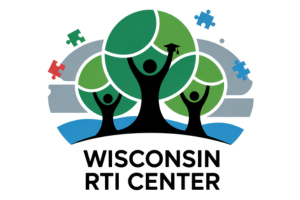The Multi-Tiered System of Supports (MTSS) offers a structured method for meeting the varied academic, behavioral, and social-emotional needs of students.
By using a proactive and equitable framework, schools can ensure no learner is left behind.
Educators, families, and students benefit from a system that promotes early support, effective interventions, and team collaboration to boost student outcomes at every level.
The Three Tiers of MTSS
Multi-Tiered System of Supports is structured around three levels of intervention that gradually increase in intensity. Each tier addresses specific student needs, helping schools deliver targeted academic, behavioral, and emotional support.
Educators use a data-driven process to identify students’ needs and place them in the appropriate tier, adjusting interventions as necessary.
Tier #1: Universal Support
— MTSS Education (@Mtssedu) May 11, 2022
Universal support serves as the foundation for MTSS. All students receive consistent, evidence-based instruction in general education classrooms.
Educators focus on aligning lessons with grade-level standards and school-wide behavioral expectations. Success at this level depends on strong teaching practices and regular monitoring.
- High-quality instruction for all students
- Lessons aligned with academic standards
- Clear and consistent behavioral expectations
- School-wide implementation
- Regular formative assessments
- Instructional practices based on research
Goal-setting plays an essential role. At least 80% of students are expected to achieve academic and behavioral success without additional interventions.
Results inform educators about the effectiveness of Tier 1 systems and highlight students who may need further support.
Tier #2: Targeted Support

Targeted support addresses the needs of students who do not meet benchmarks in Tier 1.
Instruction becomes more specialized, often delivered in small group settings. Interventions focus on skill gaps or behavior concerns that require additional attention but do not yet warrant individualized planning.
- Small group instruction tailored to specific needs
- More frequent progress monitoring
- Targeted behavioral strategies
- Consistent delivery of support sessions
- Use of data to adjust or continue interventions
Monitoring becomes more detailed at this stage. Educators assess how students respond to additional support, identifying those who improve and those who require more intensive interventions.
Families are often involved more directly, participating in discussions around next steps.
Tier #3: Intensive Individualized Support
Students requiring Tier 3 services face persistent or significant academic and behavioral challenges.
Support is highly personalized and typically delivered in one-on-one or very small group environments. Instruction is driven by thorough diagnostic data and frequent feedback loops.
- Individualized intervention plans
- One-on-one or very small group instruction
- Intensive diagnostic tools to identify underlying issues
- Collaboration with specialists (e.g., reading interventionists, counselors)
- Detailed documentation of progress
- Adjustments based on student response and data
Support at Tier 3 often involves coordination among educators, school psychologists, intervention teams, and families.
Every decision is guided by the student’s specific profile, ensuring interventions are meaningful and precise.
Core Components of MTSS
A successful Multi-Tiered System of Supports relies on a well-structured foundation made up of key components that ensure consistent delivery, equitable intervention, and actionable results.
These elements form the backbone of effective implementation and drive meaningful progress for students across academic, behavioral, and social-emotional domains.

Universal Screening
Screening is conducted for all students at multiple points during the school year. These screenings are quick, reliable, and standardized across classrooms.
The purpose is to catch early signs of academic or behavioral challenges so that no student is overlooked.
Early detection leads to timely support and helps prevent minor concerns from escalating.
- Administered 3 times per year
- Short and consistent tools used across grade levels
- Detects both academic and behavioral issues early
- Informs next steps for support or monitoring
Progress Monitoring
Once interventions are in place, student progress is tracked frequently to measure impact and ensure timely adjustments.
Progress monitoring uses both formal and informal tools, offering a real-time look at how well students are responding to support.
Adjustments to instructional methods or intensity can be made immediately based on results.
- Weekly or bi-weekly data collection
- Tools include quizzes, written reflections, and behavioral logs
- Teachers and teams evaluate student growth over time
- Results inform changes in tier placement or instructional strategy
Data-Based Decision-Making
Instructional teams rely on multiple data sources to create and refine student support plans.
These decisions go beyond test scores, using a combination of performance, behavior, attendance, and staff observations to guide action.
Plans are documented to ensure transparency, consistency, and accountability across time and settings.
- Benchmark and classroom assessments
- Behavior tracking sheets and logs
- Attendance reports and trends
- Teacher notes and anecdotal records
- Parent input when available
Tiered Instruction and Intervention
Educators align instructional practices with student needs and deliver each tier with a distinct level of support. They apply research-based interventions precisely and consistently.
High-quality delivery depends on staff training and fidelity to intervention protocols.
- Tier 1: Whole-group instruction with universal strategies
- Tier 2: Small-group sessions targeting specific areas
- Tier 3: One-on-one instruction tailored to individual profiles
- Scheduled reviews to assess fidelity and effectiveness
- Ongoing professional development for staff delivering interventions
MTSS and Special Education
Educators support students with disabilities by working together, analyzing data, and making timely decisions. Schools use MTSS to deliver early interventions and monitor progress consistently before making any formal referrals for special education.
While MTSS can inform the process, it must never serve as a barrier to services a student may need.
School teams follow clear procedures and maintain open communication to ensure students receive the right support promptly and fairly.
Schools do not use MTSS to delay or block access to special education. Instead, they rely on it to observe how students respond to strong instruction and targeted interventions. Educators gather meaningful data that may later support the evaluation of a child’s need for specialized services.
Parents and guardians can request an evaluation at any time, regardless of a student’s placement in the MTSS tiers.
Families play a central role in shaping support plans. Educators invite them to participate early and consistently, especially when concerns continue. MTSS provides a structured framework and measurable outcomes, helping everyone involved make informed and confident decisions.
- MTSS helps identify learning or behavioral challenges early through structured support.
- Progress monitoring highlights patterns that may indicate a need for further evaluation.
- Participation in MTSS does not replace or delay special education testing.
- Parents or guardians may request a formal special education evaluation at any stage.
- Schools must respond to such requests promptly and within legal timelines.
- Documentation generated during MTSS can help inform eligibility decisions and appropriate placements.
A clear partnership between families and educators ensures students receive the right services at the right time.
Role of Parents in MTSS
Family engagement serves as a powerful factor in the success of a Multi-Tiered System of Supports. Parents are not passive observers they are active participants in their child’s academic and behavioral development.
Schools function more effectively when parents collaborate with teachers and staff to support structured interventions and monitor growth.
Parents should feel empowered to ask questions, provide input, and ensure that support strategies align with their child’s individual strengths and challenges.

How Parents Can Participate
Parents play a direct role in helping MTSS work effectively. A home-school connection fosters consistent expectations, smooth communication, and stronger follow-through on educational goals.
- Attend regular school meetings related to progress reviews, intervention plans, or team discussions.
- Stay in frequent contact with teachers to understand daily and weekly learning objectives.
- Support behavior and academic strategies at home, such as homework routines, reading habits, and clear expectations for behavior.
- Follow up on recommended interventions, reinforcing skills taught in school settings.
- Ask for clarification on any instructional methods or assessments used with their child.
Active communication builds mutual trust and aligns home efforts with school strategies. As collaboration increases, student outcomes improve.
Questions Parents Should Ask
Remaining informed begins with asking the right questions. These help clarify what support is in place and how progress is measured.
- What materials and strategies are being used in my child’s instruction and interventions?
- How frequently is progress monitored, and how will I receive updates?
- What happens if an intervention does not seem to be working?
- How does my child’s participation in interventions affect their day-to-day school schedule?
- What opportunities are there for me to contribute to my child’s support plan?
MTSS vs RTI: What’s the Difference?
Educators and families often talk about MTSS and RTI when addressing student support.
- Scopes
- Purposes
- Functions
Schools use clear distinctions between the two to build more effective systems that support academic and behavioral needs together.
RTI focuses specifically on academics. Teachers apply targeted instruction, monitor progress regularly, and deliver tiered interventions to help students improve in areas like reading and math.
Educators typically use RTI to close learning gaps through focused remediation.
MTSS expands this model by including social-emotional instruction, behavioral expectations, and strategies for building a positive school climate. Schools that use MTSS address the whole student and coordinate resources across departments to support growth on multiple levels.
Leadership teams guide implementation, staff receive focused professional development, and families actively participate in the process.
While RTI usually stays within academic support, MTSS invites multiple disciplines to collaborate through one cohesive system. Schools often pair RTI with PBIS strategies as part of MTSS, creating an integrated model that reaches every student.
All students benefit when both academic and behavioral support systems work in tandem across school settings.
Summary
MTSS offers a structured, supportive system to meet student needs before problems escalate. Success depends on strong collaboration between schools and families.
Participation, informed decision-making, and consistent communication create a path toward academic achievement, positive behavior, and emotional well-being for every student.
Greater awareness, active involvement, and advocacy ensure MTSS delivers its full potential in every educational setting.

